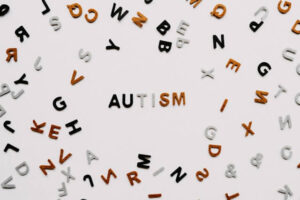
Table of Contents
Autism, or Autism Spectrum Disorder (ASD), is a complex neurological condition that affects individuals in a variety of ways. The term “spectrum” in Autism Spectrum Disorder refers to the wide range of symptoms and severity that autism can present. This diversity is what makes autism a spectrum disorder. But why exactly is autism considered a spectrum? Let’s delve deeper into this concept.
What is Autism spectrum disorder?
Autism is a developmental disorder that typically appears during early childhood and can impact a person’s social skills, communication, relationships, and self-regulation. It is characterized by a range of symptoms and behaviors that can vary significantly from individual to individual. Some common characteristics of autism spectrum disorder include difficulties in social interaction, repetitive patterns of behavior, and challenges with verbal and nonverbal communication. However, autistic individuals may also exhibit unique strengths and talents, and the degree to which they are affected by these challenges can differ widely, reflecting the vast diversity within the condition.
The Spectrum Nature of Autism
The term “spectrum” implies a range, and that’s exactly what it means when we talk about autism. Individuals with autism can have a wide range of cognitive abilities, social skills, and communication capabilities. Some might require substantial support in their daily lives, while others may need less support and, in some cases, live entirely independently.
Autism is not a one-size-fits-all condition. It impacts every individual differently. This is why professionals refer to it as a “spectrum” disorder. There’s a vast array of experiences under the umbrella of ASD.
Different Manifestations
One person with autism may have significant language delays and behavioral challenges, while another might have advanced language skills but struggle with social interactions. Still, others may have learning disabilities, while some exhibit signs of above-average intelligence. The manifestations of autism spectrum disorder are as unique as the individuals themselves.
Autism also varies in its co-occurring conditions. These might include epilepsy, gastrointestinal disorders, sleep disturbances, attention deficit and hyperactivity disorder (ADHD), anxiety, and depression, among others. The presence and severity of these conditions further contribute to the spectrum nature of autism.
Recognizing Signs of Autism
Autism spectrum disorder presents itself through a myriad of signs and behaviors. It’s essential to note that the existence of any singular sign does not denote autism. However, if several of these signs are observed, it might necessitate further evaluation by a professional. Here’s a list of potential signs of autism:
- Lack of Eye Contact: Difficulty in maintaining eye contact is one of the more common signs, as individuals with autism may find it challenging to use and interpret eye gaze as part of social communication.
- Delayed Language Development: Many children with autism exhibit delayed speech and language skills, including a lack of babbling in babies or reluctance to start speaking in toddlers.
- Repetitive Behaviors: Engaging in repetitive behaviors, such as rocking, hand-flapping, or repeating phrases (echolalia), is another indicator.
- Insistence on Sameness: Those with autism may have an intense need for a set routine and may become distressed with minor changes.
- Challenges with Social Interactions: Difficulty in understanding social cues and norms can lead to apparent aloofness or inappropriate social behavior.
- Unusual Reactions to Sensory Input: Hyper- or hypo-sensitivity to sensory stimuli, such as touch, sound, or light, can be a sign of autism. An individual might be indifferent to pain/temperature or may be bothered by loud noises or bright lights.
- Limited Interest: An intense and focused interest in a particular topic or object, often to the exclusion of other activities, is another common sign.
- Difficulty Understanding Others’ Feelings: Individuals might struggle with empathy or have difficulty grasping the concept of other people’s perspectives or emotions.
This list is not exhaustive, and the combination of signs can vary greatly. Early diagnosis and intervention can significantly impact the effectiveness of therapy and support.
Autism Diagnosis Criteria
In 2013, the Diagnostic and Statistical Manual of Mental Disorders (DSM-5) introduced significant changes to autism’s diagnostic criteria, merging several previously separate diagnoses into the single diagnosis of ASD. This change recognized the fluidity and diversity of symptoms among those affected.
The DSM-5 outlines two main categories of symptoms: deficits in social communication and social interaction, and restricted, repetitive patterns of behavior, interests, or activities. The severity is then rated on a three-tier scale. However, even within these categories and severity levels, there’s considerable variation in how symptoms present.
The Importance of Understanding the Spectrum
Understanding that autism is a spectrum disorder is crucial for appreciating the individuality of each person with autism. It aids in tailoring education, support, and interventions to meet each person’s unique needs and abilities. Recognizing this diversity also helps us challenge stereotypes and misconceptions about autism.
In conclusion, autism is a spectrum because of the wide and diverse range of symptoms and behaviors it encompasses. Each individual with autism spectrum disorder has their own set of strengths and challenges which makes them unique. It’s our responsibility as a society to understand and appreciate this diversity, providing the necessary support and opportunities for every individual on the autism spectrum to thrive.
Therapies and Interventions for Autism
A variety of therapies exist for assisting individuals with autism, each tailored to address specific areas of need and to capitalize on individual strengths. Early intervention is widely recognized as having a significant impact on the long-term development of individuals on the spectrum.
Behavioral Therapies
- Applied Behavior Analysis (ABA): A well-established technique involves reinforcing positive behaviors and skills through rewards and reducing unwanted behaviors.
- Pivotal Response Treatment (PRT): This play-based therapy focuses on developing motivation, response to multiple cues, self-management, and social initiations.
Developmental, Individual Differences, Relationship-Based Approach (DIR)
- Also known as Floortime, this therapy emphasizes emotional and relational development (feelings and relationships with caregivers).
Educational Therapies
- Structured teaching through Treatment and Education of Autistic and Related Communication-handicapped Children (TEACCH) and the use of Individualized Education Programs (IEPs) can provide a tailored learning experience.
Speech Therapy
- Addresses challenges with language and communication, helping to improve verbal, non-verbal, and social communication skills.
Occupational Therapy
- Focused on developing life skills like dressing, eating, and working, it also assists in sensory integration therapy for those with sensory sensitivities.
It is crucial that therapy choices are made in collaboration with medical professionals, taking into consideration the individual needs of the person with autism, as one approach may be more effective than another depending on the unique profile of strengths and challenges of that individual.
Conclusion
In summing up our exploration of autism spectrum disorder (ASD), it is clear that understanding and addressing the condition is multifaceted. The spectrum nature of autism demands a personalized approach to therapy and interventions, recognizing the unique abilities and challenges each individual faces. Social awareness and acceptance are equally vital in ensuring individuals with ASD can lead fulfilling lives. Society’s collective efforts in education, therapy, and building supportive communities play a pivotal role in enhancing the quality of life for those on the spectrum. With ongoing research and evolving methodologies, the prospects for individuals with autism continue to advance, fostering hope for a more inclusive future.
- Autism Routine Disruption in Adults: Coping Tips - July 16, 2024
- Autism and Obsession: An Overview - July 16, 2024
- Autism and Taking Clothes Off: Management Tips - July 16, 2024



